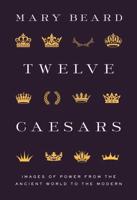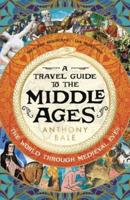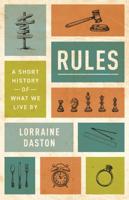Publisher's Synopsis
*Includes pictures
*Includes a bibliography for further reading
World War I, also known in its time as the "Great War" or the "War to End all Wars," was an unprecedented holocaust in terms of its sheer scale. Fought by men who hailed from all corners of the globe, it saw millions of soldiers do battle in brutal assaults of attrition which dragged on for months with little to no respite. Tens of millions of artillery shells and untold hundreds of millions of rifle and machine gun bullets were fired in a conflict that demonstrated man's capacity to kill each other on a heretofore unprecedented scale, and as always, such a war brought about technological innovation at a rate that made the boom of the Industrial Revolution seem stagnant.
The most iconic images of the First World War are of the war on land. They depict the trench lines, the shell holes, and the barbed wire. They show a generation of young men in uniform, living in holes dug from the dirt, rifle in hand, waiting for the next devastating artillery bombardment, but part of that same generation faced a very different war, one that was just as important in deciding the fate of Europe, but which is often forgotten in popular histories. This was the war at sea. It was vital to the economic side of the war, as the Allies cut off Germany's supply lines from the outside world and so placed a squeeze on their opponents' military industries. Here events took place that would draw America into the war, providing the Allies with a new pool of manpower and so ensuring that the scales of the conflict tipped in their favor.
Many members of British society viewed war as a sport, a lethal one admittedly, but one played by gentlemen in the spirit of amateurism and fair play as it had been throughout the British Empire in the preceding decades. The bloody stalemate on the Western Front caught them unprepared for the dark arts of covert warfare which would be needed to avert defeat, gain the initiative, win the war and, ultimately, shape the peace. Those operations would witness the evolution of an ad hoc coalition of stakeholders from the military, the political elite, academics, technical experts, various kinds of industry, the media, and even the artistic community, all of which came together to wage a variety of forms of covert warfare. Many of the programs were technically successful, and in some cases, they undoubtedly saved lives and shortened the war. In the process, the administration and execution of covert warfare became increasingly well-organized and sophisticated.
Given the nature of war, many operations and many technologies have to be covert in order to be successful, and that imposes limits on democratic oversight, but in the case of the First World War, the boundaries of what was acceptable under the bounds of morality and the laws of war were repeatedly challenged and extended by all the participants. Concurrent with that, the powers of the British state were massively and permanently enhanced, but Parliament was rarely consulted and no mechanisms for internal consistency or democratic oversight were developed. In some cases that absence of democratic oversight was legitimate according to the needs and laws of war, but in other cases, it was not, and the democratic deficit which resulted has had lasting consequences.
British Covert Operations in World War I: The History of Britain's Espionage and Dark Arts during the Great War examines some of the most daring operations conducted behind the lines. Along with pictures of important people, places, and events, you will learn about British covert ops during the war like never before.






